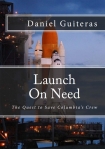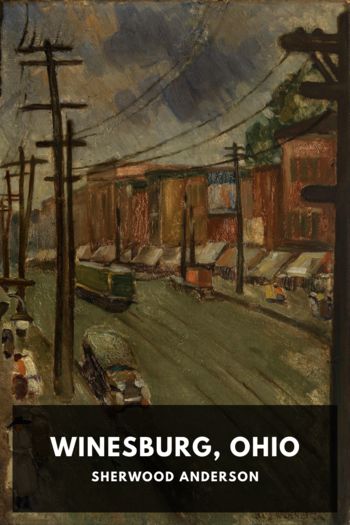Launch on Need, Daniel Guiteras [the giving tree read aloud TXT] 📗

- Author: Daniel Guiteras
Book online «Launch on Need, Daniel Guiteras [the giving tree read aloud TXT] 📗». Author Daniel Guiteras
(Columbia Accident Investigation Board Report, Volume I, page 49–50)
The physical cause of the accident as defined in the above excerpt, however, tells only part of Columbia’s tragic story. As the CAIB interviewed NASA managers and studied e-mail communications between NASA engineers, it discovered that NASA managers missed eight separate opportunities during the mission to investigate warning signs of Columbia’s pending doom. The “missed opportunities” centered primarily around the engineering staff’s requests for imaging (using U.S. military ground-based and/or satellite assets) of Columbia while on orbit, and NASA management’s reluctance to follow through with those requests.
The engineers had studied Columbia’s launch films within a few hours after launch, and had correctly identified the foam strike against Columbia’s wing. What they didn’t know, however, was the extent of damage to the left wing. They suggested high-resolution imaging of Columbia’s wing could offer directed views of the area in question. They even suggested that a pair of crew members could go out on the wing to inspect for damage. But these actions didn’t occur.
The Board was particularly stunned by the inaction of NASA managers throughout Columbia’s final flight, despite the fact that these managers had recurring clues and warning signs. From the organizational causes section of the CAIB report, the Board wrote this:
Even after it was clear from the launch videos that foam had struck the Orbiter in a manner never before seen, Space Shuttle Program managers were not unduly alarmed. They could not imagine why anyone would want a photo of something that could be fixed after landing. More importantly, learned attitudes about foam strikes diminished management’s wariness of their danger. The Shuttle Program turned “the experience of failure into the memory of success.” Eighteen managers also failed to develop simple contingency plans for a re-entry emergency. They were convinced, without study, that nothing could be done about such an emergency. The intellectual curiosity and skepticism that a solid safety culture requires was almost entirely absent. Shuttle managers did not embrace safety-conscious attitudes. Instead, their attitudes were shaped and reinforced by an organization that, in this instance, was incapable of stepping back and gauging its biases. Bureaucracy and process trumped thoroughness and reason.
(Columbia Accident Investigation Board Report, Volume I, Page 181)
On Flight Day Eight, an e-mail was sent from Mission Control up to Columbia’s commander and pilot informing them of an upcoming Public Affairs Office event. Since no one aboard Columbia had any knowledge of the foam debris strike, Mission Control did not want the crew to be surprised during the media event, say, if a reporter were to ask a question about the debris strike.
Keep in mind while reading the following e-mail excerpt that, at the time this e-mail was sent, concern for Columbia was building among some engineers at NASA—so much so that a request to get imaging of Columbia by the Department of Defense had been made the previous day. Sadly, that request was made and then rescinded by the Shuttle Transportation System (STS) Mission Management Chair for STS-107, Linda Ham, all within the time span of 90 minutes.
The e-mail excerpt from Mission Control to Columbia’s commander and pilot stated:
There is one item that I would like to make you aware of for the upcoming PAO event on Blue FD 10 and for future PAO events later in the mission. This item is not even worth mentioning other than wanting to make sure that you are not surprised by it in a question from a reporter.
During ascent at approximately 80 seconds, photo analysis shows that some debris from the area of the (-)Y ET Bipod Attach Point came loose and subsequently impacted the orbiter left wing, in the area of transition from Chine to Main Wing, creating a shower of smaller particles. The impact appears to be totally on the lower surface and no particles are seen to traverse over the upper surface of the wing. Experts have reviewed the high speed photography and there is no concern for RCC or tile damage. We have seen this same phenomenon on several other flights and there is absolutely no concern for entry.
[PAO = Public Affairs Office, FD 10 = Flight Day Ten, (-)Y = left, ET = External Tank] (Columbia Accident Investigation Board Report, Volume I, page 159)
Columbia’s commander responded to the above e-mail two days later. It is clear by his response that he’d been sufficiently reassured by the tone of Mission Control’s e-mail and had absolutely no concerns.
He wrote this response:
I saw the word Chine below and thought it was “China.” I guess it’s believable that you might meet someone from China by the name of Main Wing :).
As the mission progressed, NASA engineers continued to communicate frustration and worry about the debris strike. The CAIB report gives several examples of how engineers discussed worst-case scenarios and hypothetical outcomes one could expect during reentry, depending on the location and severity of damage. The following e-mail from Robert Daugherty, a shuttle landing-gear expert, to Carlisle Campbell, a shuttle landing-gear design engineer, is an example of the level of concern some NASA engineers had during the mission. This e-mail was sent four days before Columbia was scheduled to land.
Original Message
From: Robert H. Daugherty
Sent: Tuesday, January 28, 2003 12:39 PM
To: CAMPBELL, CARLISLE C., JR (JSC-ES2)
(NASA)
Subject: Tile Damage
Any more activity today on the tile damage or are people just relegated to crossing their fingers and hoping for the best?
See ya,
Bob
(CAIB Report, Volume I, page 165)
Since NASA managers and engineering staff had never studied contingencies for a damaged thermal protection system, the Board decided to assign NASA the task of creating repair and rescue scenarios for Columbia. The Board wanted to know if it would have been





Comments (0)